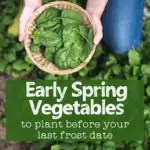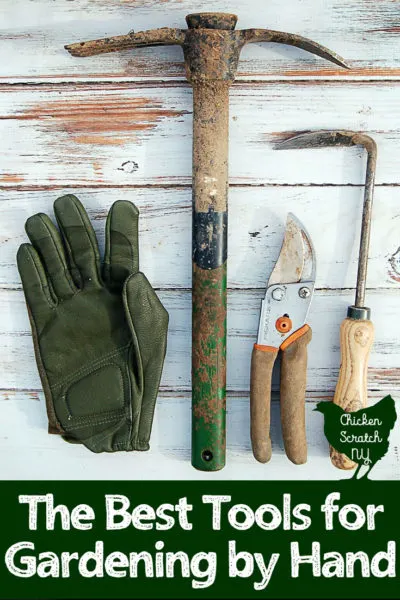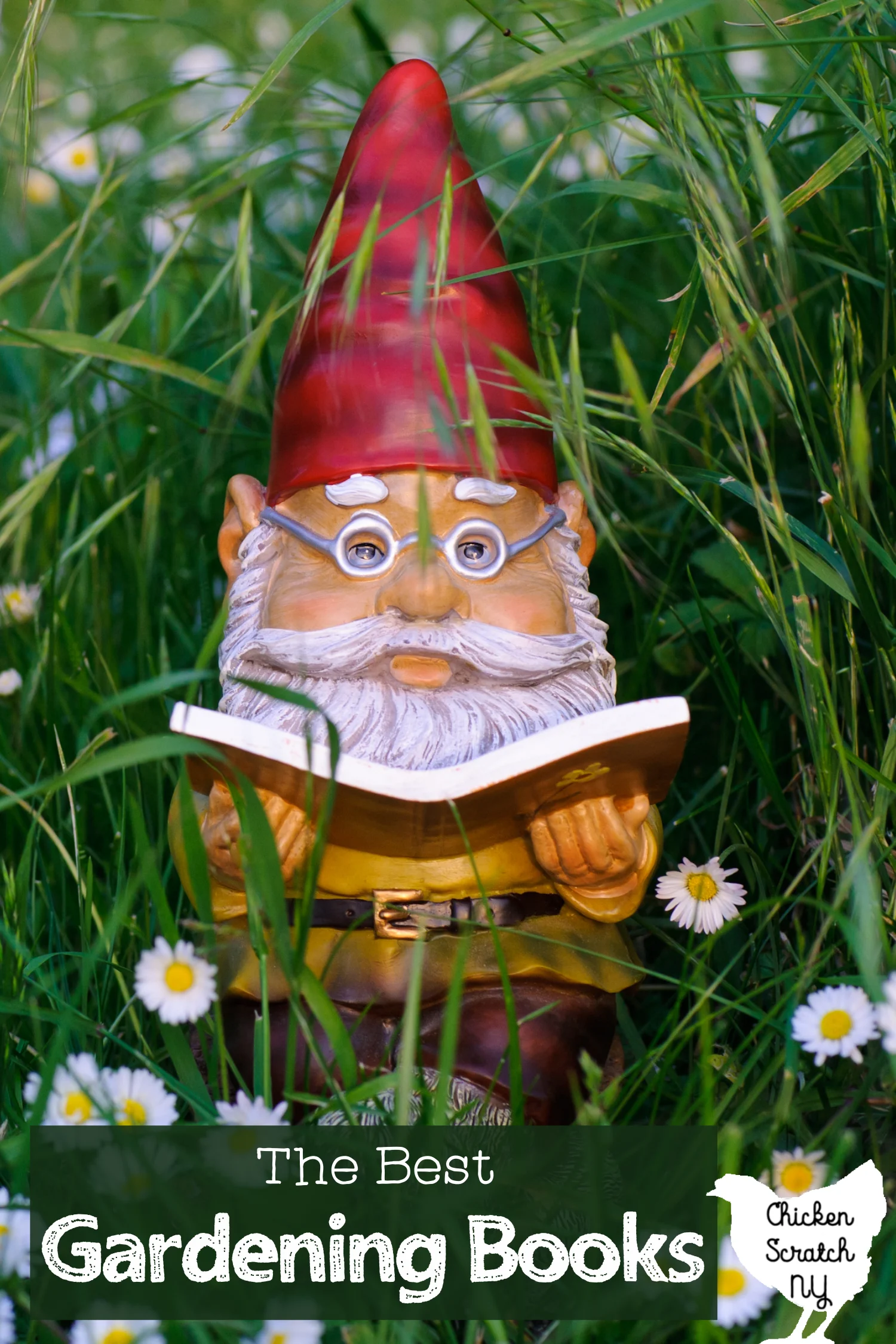The growing season doesn’t have to the defined by frost dates. There are plenty of garden crops that prefer cooler weather and can get you ahead of the game in the spring vegetable garden.
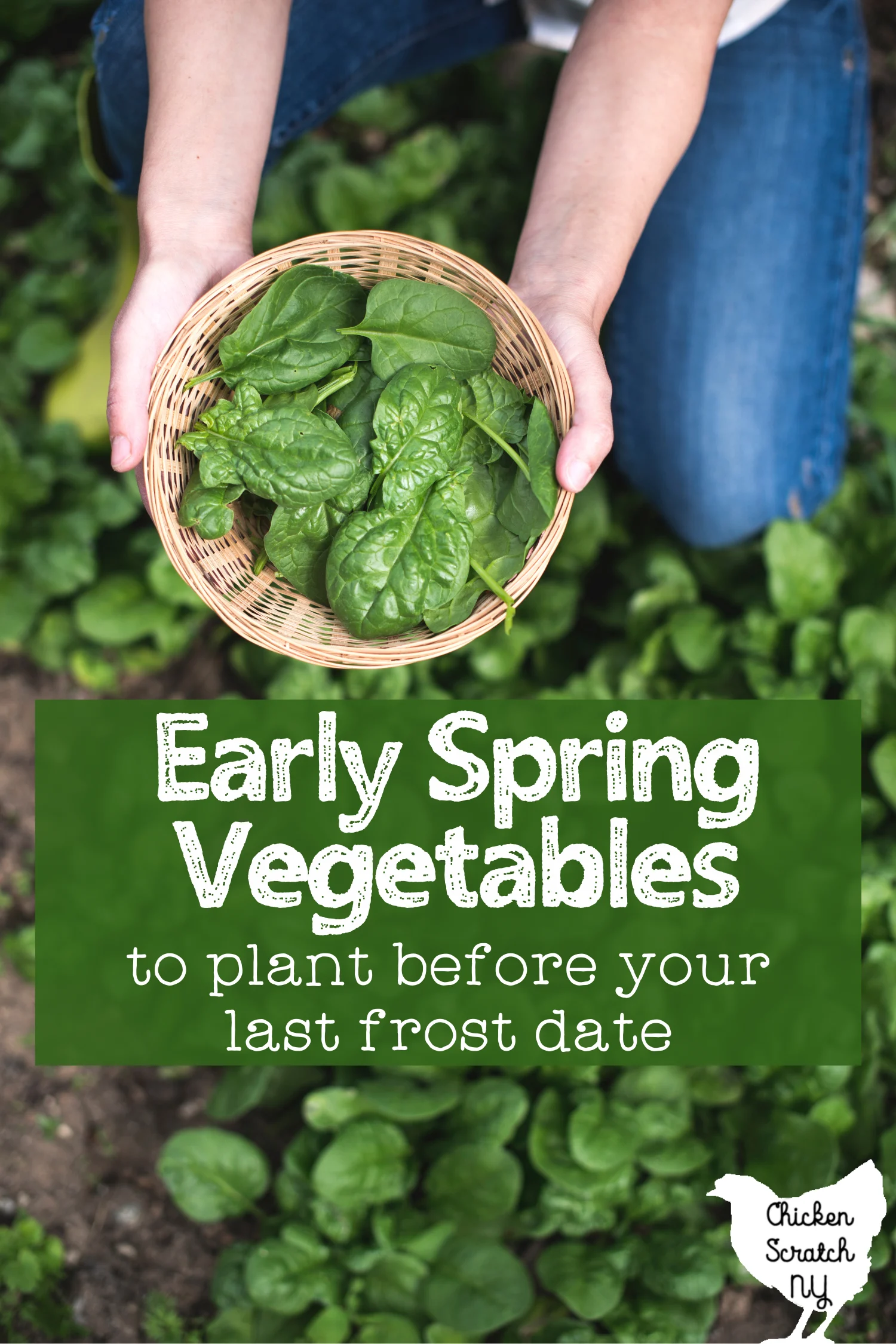
I don’t know about you but when that first 60-degree day hits all I want to do is throw on my overalls and run out to the garden.
Unfortunately, where I live we usually have at least 1 if not 16 snow storms after that magical day but no matter what the garden gremlin that lives deep in my soul has woken up and I get antsy to start planting.
As most of us have learned, starting too early will only lead to sadness and wasted seeds. On the bright side, there are a lot of options for a spring garden that not only survive, but thrive in the cool, wet weather.
The majority of these garden vegetables are quick growing and they’ll be ready to harvest before it’s time to put in your heat-loving veggies like peppers and eggplant.
If you’re into fall and winter gardening you’ll want to keep these vegetable plants in mind because the frost tolerance that allows them to grow in the early spring and that quick growth also makes them great options for late summer & fall planting.
Read more about Growing Fall Peas
Soil Temperature
When it comes to early planting in the spring garden the soil temperature is actually more important than the air temperature. The easiest way to know what your soil temperature is is with a soil thermometer.
You can get away with a standard kitchen thermometer but a garden thermometer will make things easier. They have a larger dial, which makes it much easier to see the difference between 40 and 45 degrees.
Every seed has a minimum soil temperature needed for germination and an optimal range. This information will be listed on the seed packet if you’re lucky.
That information can also be found in The Vegetable Gardeners Bible, there is an entire section of plant profiles that gives you all sorts of helpful info about garden crops from seed to harvest.
Read more about my Favorite Gardening Books
Soil is much denser than air and it holds onto heat. Once the soil has reached 50 degrees it’s not going to suddenly freeze even if the air temperature goes down to 30 degrees.
Even though these plants are frost tolerant they can be wiped out by a late spring hard freeze. If you plan to do a lot of early growing it’s helpful to have some floating row cover on hand to protect your plants during sudden cold spells.
Workable Soil
The other key element to early planting is workable soil. You’ll often see the phrase “plant as soon as soil can be worked in the spring”.
This one is a little trickier than soil temperature. Workable soil has to be thawed and more critically, dry enough to work with.
We’re not looking for dry soil but it shouldn’t turn to mud when you look at it too hard. Exactly when your soil becomes workable depends a lot on your soil type.
There is a lot of water early in the growing season thanks to the melting snow and all those April showers. Sandy soil will be the fastest to drain and clay soil will stay wet and unworkable the longest.
To test if your soil is workable pick up a handful and give it a squeeze. If the soil crumbles it’s dry enough to plant, if it sticks in a ball it’s too wet.
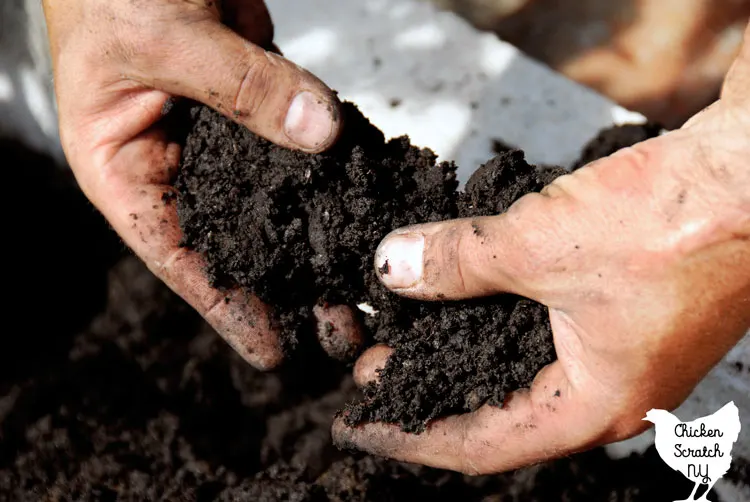
While this advice is directed towards to health of the seeds, seeds will rot in soil that is constantly too wet, it also protects the structure of your soil. If you get in the dirt when it’s too wet you’ll get it all clumped up then when it does dry it will be in rock-hard balls (ask me how I know that).
I have hard, clay soil and it’s a big part of the reason I use raised beds in my garden. Over the years I’ve been dumping compost, alpaca poop, and the deep litter from the chicken coop into the beds and letting the earthworms do their magic.
One more thing about workable soil, if you’ve added a thick layer of mulch to the ground to help hold in the heat you should remove it in the spring, the same mulch that holds in the ground heat in the winter will stop it from absorbing heat from the sun the in spring.
Direct Seeded Early Season Spring Vegetable Crops
Direct seeding, or planting seeds in the garden, is the easiest way to get your garden growing. Direct seeding is the best way to grow root vegetables and will eliminate any transplant stress or shock from moving out from under cozy grow lights into the real world.
Read more about Growing & Eating Root Vegetable Crops
It’s also really nice to not have to mess around with yet another tray of seedlings and hardening off.
An extra benefit to spring planting is that the frequent rains cut way back on watering. One of our biggest struggles here in New York is finding time between rain showers to get the seeds in the ground!
Beets & Turnips
Beets and turnips are both root crops that prefer cooler weather and can be planted 2-4 weeks before the last frost date.
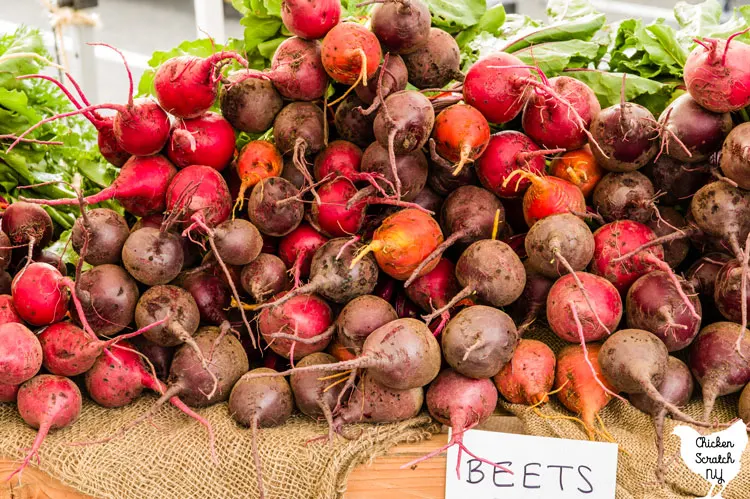
You can begin planting beet seeds and turnip seeds when the soil reaches 50°. You’ll be able to harvest baby veggies in about 30-40 days.
Beets and turnips are both popular choices for succession planting, where you space out your plantings, usually growing smaller amounts at once and replanting every 10 days or so.
Read more about Growing & Eating Root Vegetable Crops
Swiss Chard is a beet relative grown for its large leaves instead of its roots. Like a lot of greens, it’s cold hardy, and can be planted when you plant your beets.
Kohlrabi
Kohlrabi is related to broccoli and cabbage and has a similar affinity for cool weather. This brassica is grown for the enlarged stem that can be eaten raw or cooked.

Kohlrabi seeds can be planted 4-6 weeks before your last frost date when the soil is at least 45° but you will have better germination when the soil is in the 65-80° range.
Lettuce
Lettuce will germinate in soil as cool as 45° and grows best between 60-65° making it a perfect early spring vegetable crop. It will struggle when the temperatures start to go up so plant to pull it around the time you can plant your tomatoes.
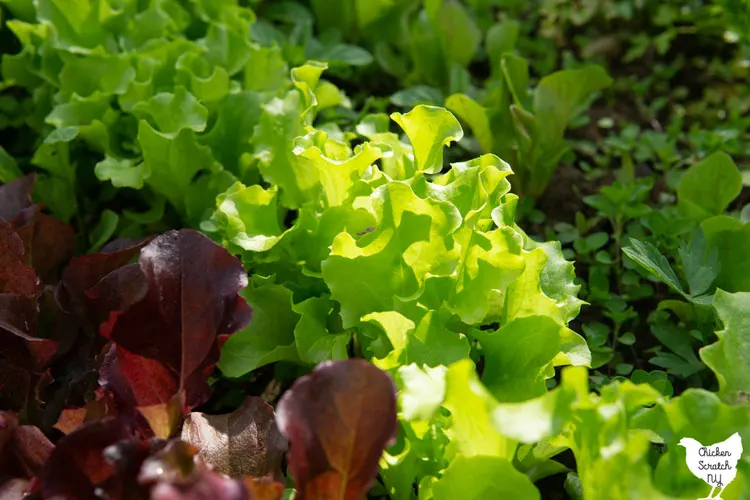
You can transplant lettuce, but I would recommend saving the extra effort for head lettuce. Start lettuce indoors a month before you plan to set it out, about a month before the last frost date. Properly acclimated lettuce can survive temperatures down to 20 degrees.
If you’re after baby greens or a cut-and-come-again style harvest go with direct seeding in the garden. I like to grow lettuce mixes (something about ordered chaos appeals to my brain) and direct seeding is the best way to go there too.
Peas
I remember hearing to plant peas on St. Patrick’s Day when I was growing up and always being confused because we usually have snow on the ground for most of March. It’s one of those cute garden sayings that are only helpful sometimes.
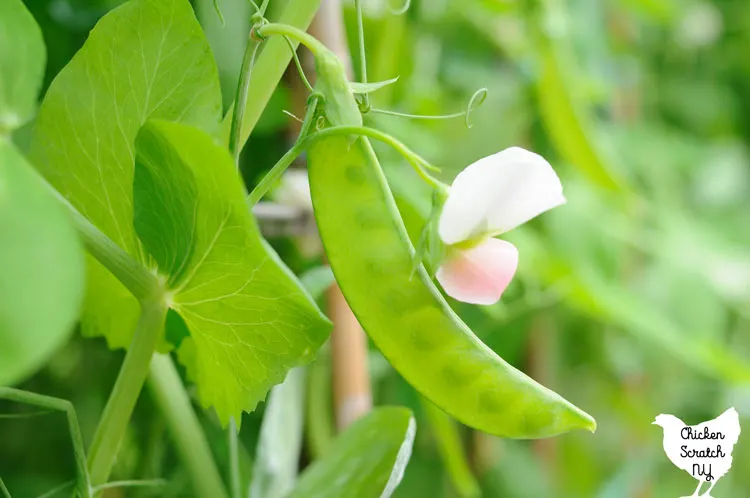
Instead, you should plant your peas as soon as the soil can be worked and reaches 45°, maybe that’s mid-March, maybe late April, it all depends on where you are.
I usually soak my peas overnight before I plant them, it’s not completely necessary in the wet spring months but I find it motivates me to get them in the ground the next day no matter what.
If you’re growing a taller variety of peas on a trellis make sure you install that at the same time you plant your peas. That way when the plants take off you won’t be left with a tangled mess.
Fava beans are a close relative to the garden peas and love cold weather and soil. You can plant them early, the same time you’d plant peas, and grow either as a nitrogen-fixing cover crop or for the edible beans.
Read more about Cover Crops
Radishes
Radishes are so easy to grow I’m shocked the packets don’t spontaneously turn into crisp bunches all on their own. Wait until the soil hits 50° before you plant your spring radishes and stand back, you’ll have an easy harvest in about 30 days.
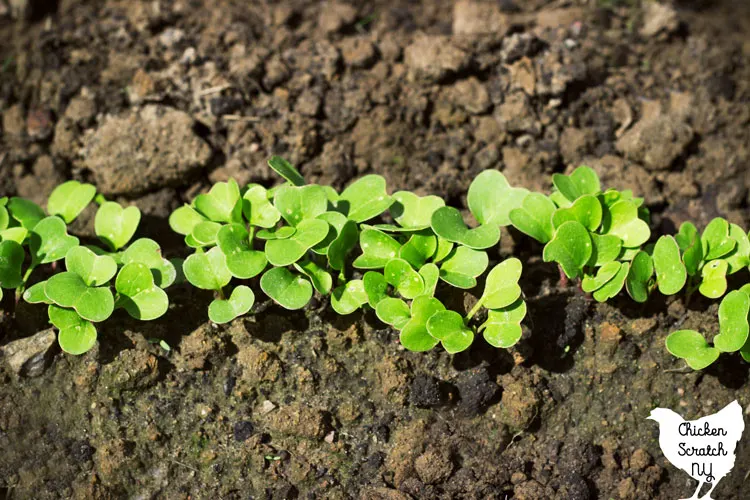
Learn more about Growing Radishes and 5 Reasons you Need them in your Garden
Greens
When it comes to early garden plantings the greens really run the show. There are so many different kinds of green, quite a few you’ve probably never even heard of!
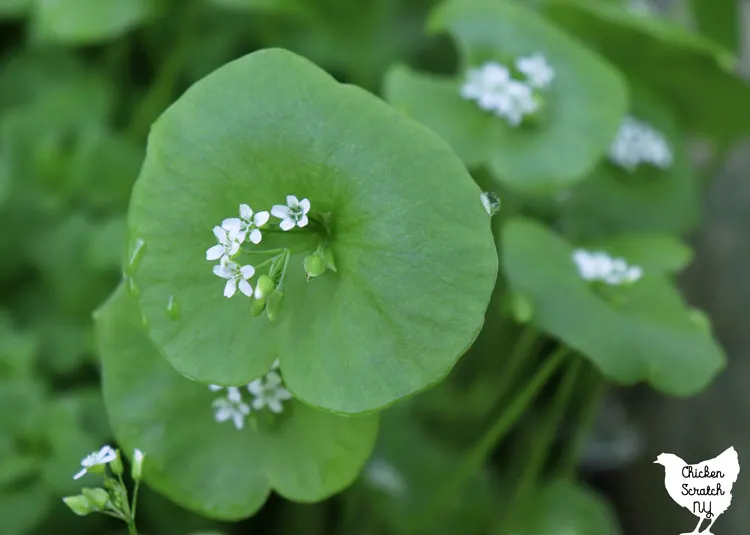
Always double check your packets before you plant for spacing and soil temps for planting but here are a few direct planted greens you should check out for your spring salads:
- Arugula (2-4 weeks before the last frost date)
- Bok Choy (2-4 weeks before the last frost date)
- Claytonia (4-6 weeks before the last frost date)
- Chinese Broccoli (1-2 weeks before the last frost date)
- Collard Greens (2-4 weeks before the last frost date)
- Cress (4-6 weeks before the last frost date)
- Mache/Corn Salad (4-6 weeks before the last frost date)
- Mustard (2-4 weeks before the last frost date)
- Spinach (4-6 weeks before the last frost date)
Check out these Spring Salad Recipes featuring fresh, seasonal produce
Early Season Transplants
While the majority of our early season crops can be started directly in the ground some of them need a head start inside. When you start seeds indoors you usually do it in groups based on your last frost date in the spring.
Read more about Why Your Growing Zone Doesn’t Matter in the Vegetable Garden
When you think of starting seeds indoors you’re probably thinking about tomatoes, peppers, and the rest of the heat-loving veggies. But there are a few garden crops that can be started indoors and moved outside before that magical date.
Starting seeds indoors and moving them out at a month or so old can seem pointless but it’s a good solution if you have really wet weather and you just can’t get into the garden without messing up your soil.
There are a lot of numbers in the information below, I can’t give you exact dates because everyone is in a different place but I recommend checking out the Seed-Starting Date Calculator from Johnny’s Seeds to get the specific dates for your area.
Speaking of dates, gardening is at least 50% guessing game, no matter how hard you try you can’t control or even accurately predict the weather. I’m going to throw out a lot of dates and temperatures, don’t let it get you down, and just try your best to stick to the ranges.
It also doesn’t hurt to cross your fingers and hope for the best.
Cabbage
These cool-season brassicas take a few months to get to harvest size and can benefit from a head start.
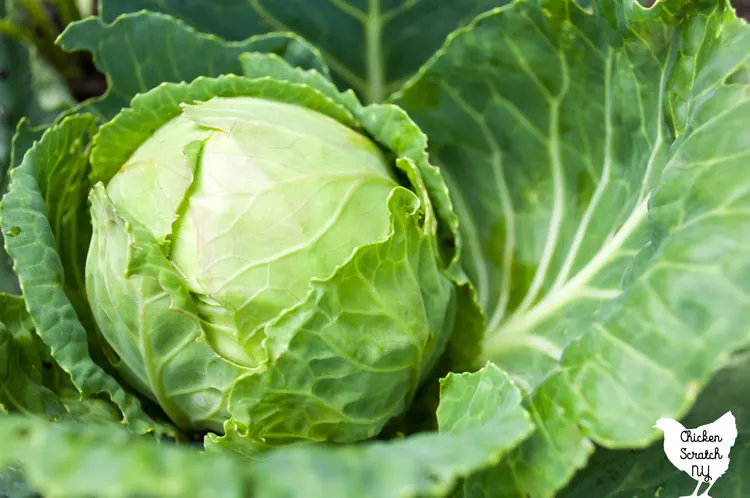
Start cabbage seeds indoors 8-10 weeks before the last frost date & transplant 4 weeks before it. I know that’s confusing, the goal is to be planting 4-6 week old seedlings out a month before the last frost date.
Cabbage might seem like a boring plant but there are quite a few varieties out there, from small cone-shaped cabbages like my favorite, Early Jersey Wakefield, to crinkly savoy cabbage to giant-headed cabbage perfect for Polish Stuffed Cabbage Rolls.
Look for smaller, short-season cabbages for spring plantings, save the larger cabbages for a fall harvest where they can mature in the cooling autumn weather.
Broccoli & Cauliflower
Broccoli and cauliflower plants are hardy but a bit more delicate than cabbage, if the plants get settled and experience a hard freeze they might bolt and you’ll miss out on the harvest.
Look for early season varieties when you’re planning out your spring garden, there are a lot of options for both cauliflower and broccoli so pay attention to the season, most types will say for early (spring) or fall harvest.
Start broccoli seeds indoors 6-8 weeks before the last frost date. Try to transplant your broccoli seedlings into the garden at 3-4 weeks old.
Cauliflower seedlings should be planted out in the 4-5 week old range or they might suffer from transplant shock and fail to thrive.
Specialty broccoli, like Chinese Broccoli and Sprouting Broccoli, are grown differently so make sure you’re reading your seed packets.
Kale
Kale will grow in cool soil and weather but it germinates best at 75° making it a little tricky to get going from seed in cold soil. Aim to plant your kale seedlings out at 4-6 weeks old about a month before your last frost date.
Kale is most often grown as a fall crop where it can mature in cooler weather but you can get a good spring crop if you pick it young for baby greens or pick a heat-tolerant variety.
Leeks & Onions
Start onions and leeks indoors 10-12 weeks before your last frost date & transplant 4 weeks before the last frost. It’s been years since I bothered with starting leek and onions from seeds other than scallions.
Read more about Why I Don’t Start Onions from Seed
I discovered Dixondale Onion Farms and never looked back. It’s much more expensive than starting from seeds but for me, the time saved is worth the extra expense.
Their site is also a great resource if you’re looking to grow onions. There is tons of information about the best way to plant, grow, harvest, and store onions.
Check out my Vegetable Garden page for more ideas or start here:

